Seasons – February 2022

From the Plateau Land & Wildlife Management Team
We tend to agree with the Norwegians when they say, “There is no bad weather, only bad clothes!” Despite the chilly temperatures, this time of year offers many benefits for management activities. Texans don’t have to endure scorching heat and humidity this time of year, snakes are still relatively inactive and mosquitoes are still a few weeks away.
This Seasons Newsletter is full of helpful considerations and tips for landowners including articles and blogs from our expert team of biologists and property tax consultants, attorneys from Braun and Gresham LLC, real estate professionals, and other resources. Read blogs and articles covering open space valuations, property tax deadlines, invitations to virtual events covering your property tax valuation options, and more.
Until next Seasons,
The Plateau Team
Table of Contents
The Economic Value of Open-Space: A Refresher On Why It Matters
Spring Bird Breeding Survey Preview
Service Spotlight: Winter Webinar Series
Introducing John Michael Hairston
Stress Test Your Estate Plan
Field Notes: Pictures and Highlights of Properties in Wildlife Management
News for Texas Landowners
The Economic Value of Open-Space: A Refresher On Why It Matters
By Shane Kiefer, Chief Operating Officer, Director Of Ecological Services, Certified Wildlife Biologist, Senior Property Tax Consultant
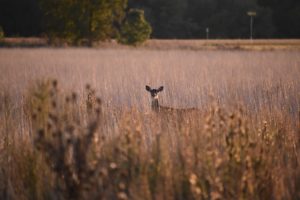 When tax bills began arriving in the fall, you were no doubt reminded of the economic benefit of having a wildlife or agricultural valuation in place. Whenever the Texas Legislature is coming into session, we at Plateau are often asked, “Are they going to take away my wildlife or agricultural valuation?” You are no doubt aware of many of the benefits of open-space, but if you find yourself or someone else asking these questions, here’s a refresher.
When tax bills began arriving in the fall, you were no doubt reminded of the economic benefit of having a wildlife or agricultural valuation in place. Whenever the Texas Legislature is coming into session, we at Plateau are often asked, “Are they going to take away my wildlife or agricultural valuation?” You are no doubt aware of many of the benefits of open-space, but if you find yourself or someone else asking these questions, here’s a refresher.
There is strong protection built into the way the open-space (ag/wildlife valuation) law is structured, which should ease your mind a little. The laws that allow for a special valuation on open-space agricultural and wildlife lands are required by the Texas Constitution Article VIII, §1-d-1, which says that the legislature “SHALL provide by general law for taxation of open-space land devoted to farm, ranch, or wildlife management purposes on the basis of its productive capacity…” (emphasis added).
This means that the legislature cannot simply pass a law to eliminate these special valuations. They can change the rules and requirements, but they cannot eliminate it without amending the constitution – only the people of Texas can do that.
The premise that landowners enjoying the benefits of wildlife and agricultural valuations are not paying their fair share is a flawed one. To start, these are not tax “exemptions” they are special valuations designed to tax land on its productive capacity instead of its market value. The truth is that owners of open-space land are helping to make up for deficits in delivering services to residential property. According to a compilation of studies from across the country by the American Farmland Trust, the median cost to provide services to working and open-space lands is only $0.37 for every dollar raised in tax revenue from those lands. This ratio is also known as the Cost of Community Services (COCS) ratio. The open-space land ratio is comparable to the ratio for commercial lands ($0.29/$1.00). In contrast, providing services to residential land costs $1.19 for every dollar raised. That means it costs more to provide services to all those people and houses than they pay in property taxes.
Texas lands are no different. Three counties in Texas had ratios ranging from 0.18/$1.00-0.33/$1.00, which means that Texas open-space land is even more cost-efficient than the national median. Despite the substantially higher revenues that residential use brings in over open-space land with those special valuations on it, the infrastructure and service needs for all that open-space land are much lower. As David Langford of the Texas Wildlife Association has said: “cows don’t go to school, songbirds don’t call 9-1-1, and crops don’t require the ‘jaws of life’ or Medivac helicopters after Saturday night smashups on the freeway.”
And remember, you are still paying market value on all the structures (if any are present) and the associated residential land on your property. The only land receiving the tax break is that used for wildlife or agricultural purposes and that land requires virtually no government services.
Of course, there are lots of intangible and difficult to quantify reasons to support open-space including improved water quality, wildlife habitat, scenic views, etc. As wildlife biologists, these mean quite a bit to the Plateau team. As taxpayers, though, it is nice to see that the economics make sense as well.
Remember to encourage your representatives to support open-space. Even though they cannot eliminate ag/wildlife valuations without a constitutional amendment, they can adjust the rules to make it more difficult to qualify. And for anyone who wants to do away with them, remember that if that occurs, lots of land will hit the market with the resulting rapidly increasing taxes, driving prices (and tax revenues) down. And never forget that conversion of land to residential use may result in more tax revenue, but that comes with higher costs to the state and local governments who provide essential services, erasing any benefit to government coffers.
This article was originally published in a January 2019 edition of Seasons.
If you have questions or would like more information about appropriate Wildlife Management activities for your property, please contact us at (512) 894-3479 or [email protected].
Back to TopBack to Top
Spring Bird Breeding Survey Preview
Learn what birds are migrating through your habitat this spring!
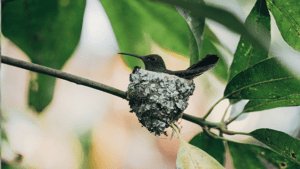 Spring Breeding Bird Surveys are conducted from mid-March through late June, which are the peak breeding and migratory months. These surveys are a great opportunity for landowners to practice their birding skills and tour their property with a professional wildlife biologist while visiting a number of bird survey stations to detect birds either through visual or auditory observation. Detailed reports are produced with all species and numbers observed, brief habitat and location descriptions for each station. Annual surveys can be analyzed over several years to show trends and improvements in species observed, indicating improved habitat through your efforts.
Spring Breeding Bird Surveys are conducted from mid-March through late June, which are the peak breeding and migratory months. These surveys are a great opportunity for landowners to practice their birding skills and tour their property with a professional wildlife biologist while visiting a number of bird survey stations to detect birds either through visual or auditory observation. Detailed reports are produced with all species and numbers observed, brief habitat and location descriptions for each station. Annual surveys can be analyzed over several years to show trends and improvements in species observed, indicating improved habitat through your efforts.
A Plateau Spring Breeding Bird Survey:
- Qualifies as a Wildlife Management activity in just one morning
- Allows landowners to monitor long-term trends of species composition and abundance
- Establishes listening stations within diverse habitat locations throughout your property for observation
- Records both the number and the type of different species of birds that are seen or heard at each station in a field log included in a detailed report
- Offers wildlife management recommendations for current and potential activities which may improve overall species abundance and diversity
If you’re interested in learning more about Plateau’s Spring Breeding Bird Survey, or would like to schedule one for your property call (512) 894-3479 or email [email protected].
Service Spotlight: 2022 Winter Webinar Series
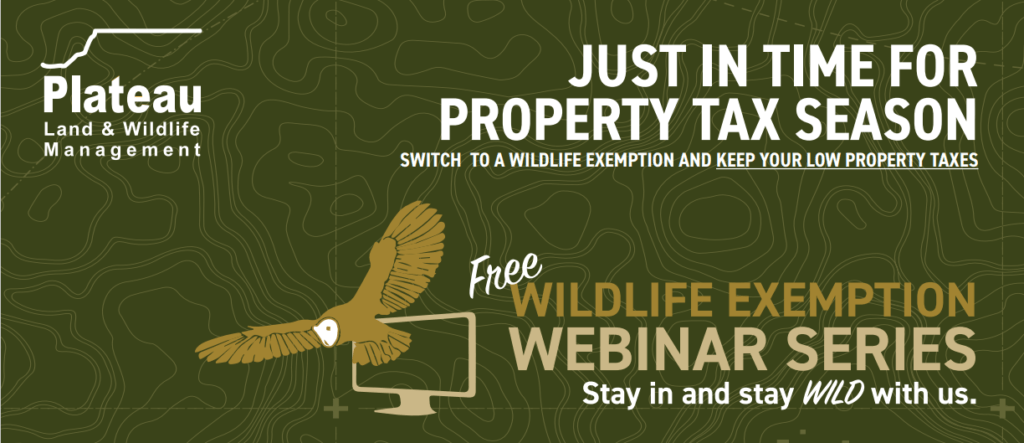
Plateau’s 2022 Winter Webinar Series
Ready to learn more about Wildlife Management options for your property?
Join us 5:45 – 7:00 pm each Thursday evening from now until March 3 as Plateau Land Specialists and Staff Biologists host FREE educational webinars for landowners. Whether you’re a new landowner or already in Ag or Timber, everyone is invited to join us for our 2022 Wildlife Exemption Webinar Series. Connect with experts and learn how to make the switch to a Wildlife Management Exemption.
Listen along from your computer as our experts cover a variety of land ownership, wildlife management, and Texas ag exemption topics. Get answers to your questions about making the switch, learn about filing deadlines, requirements for activities and record-keeping, and more.
Special Landowner Topics Presented By: Texas Agrilife, Cedar Eaters, and Capital Farm Credit.
View topics and featured speakers and register for upcoming events by visiting Plateau’s Event Directory.
For questions or more information, contact [email protected] or (512) 894-3479.
INTRODUCING JOHN MICHAEL HAIRSTON
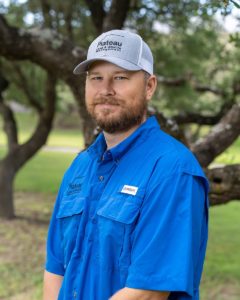
John Michael joins the Accounts Team as a Regional Manager.
Born and raised in Cameron, John Michael has called Central Texas his home all his life. John Michael’s love of the outdoors was inspired from a young age; some of his earliest memories include early morning Mourning dove and whitetail deer hunts alongside his father, and shadowing his grandfather, a rancher, along to properties in Milam County.
After career as a collegiate baseball player, John Michael transferred to Texas A&M University to pursue his passion for wildlife conservation. At A&M, he earned a Bachelor of Science in Wildlife and Fisheries Sciences, with a Wildlife Management focus. After graduation, he worked in the aquaculture industry in fisheries management with the Texas Parks & Wildlife Department and Arkansas Game and Fish Commission.
After first joining our family as a Products and Services Technician, John Michael has now transitioned to the role of Regional Manager in Central Texas – the very area in which he grew up. He is now serving Bell, Bosque, Burnet, Coryell, Hamilton, Lampasas, Llano, McClennan, Milam, Mills, San Saba, and Williamson counties.
Married for more than 18 years to his high school sweetheart, John Michael is the father to four children. Outside of work, his free time is dedicated to his family, his church, maintaining his property and cheering on Aggie sports.
John Michael is excited to take on his new role, and said he is most looking forward to supporting landowners and helping others be good stewards of their land in Texas.
Back to TopBack to Top
Stress Test Your Estate Plan
By Erin Chesser, Braun & Gresham Attorney and Counselor
 A great plan is only as good as its execution. In most cases we don’t begin to truly see the execution of an estate plan until after a person passes away. Most people think of the execution of an estate plan as being the collection of assets, payment of debts, and distribution of gifts, but the execution starts long before death, and in the best of cases may start before the ink is even dry on the estate planning documents, themselves.
A great plan is only as good as its execution. In most cases we don’t begin to truly see the execution of an estate plan until after a person passes away. Most people think of the execution of an estate plan as being the collection of assets, payment of debts, and distribution of gifts, but the execution starts long before death, and in the best of cases may start before the ink is even dry on the estate planning documents, themselves.
Great execution of your estate plan begins with funding and titling. Your estate plan is essentially your set of directions and rules for how your assets are to be handled upon your passing. But those directions and rules only apply if your ownership status and the potential ownership status of your beneficiaries matches what you have contemplated in your estate plan. Here are some common areas of disconnect to consider:
- Passing real estate to multiple people with differing ideas on how to sell, preserve, or manage it
- Inheriting and passing on mineral interests where title has not been formally updated
- Charitable giving to groups that have since dissolved, or have stopped operating as charities
- Naming as guardians, agents, executors, or trustees people who are no longer in your life, or with whom your relationship has substantially changed
- Using beneficiary designations (e.g. retirement accounts) or account ownership styles (e.g. pay-on-death bank accounts) in a way that is not contemplated by your overall estate plan
Work the plan, don’t let the plan work you. As your life develops, so may your planning needs. Whether you are forming business entities and inheriting complex assets, or your family is experiencing marriages, births, and other life events that affect the size and shape of your family, changes in your life should spark the possibility of changes in your estate plan. Many excellent estate plans contemplate these types of changes and are durable enough to withstand them without substantial amendments or restatements. It is worth a quick call to your estate planning attorney to make sure that whatever changes you have experienced are fully covered by your estate plan.
Stress Test your Plan.
Rather than waiting to test your plan until after you pass and leaving the stress to your family, let your attorney stress test your plan ahead of time. A stress test will help identify potential outcomes of your plan that may be different now than they were when you originally created it. Here are some life events that should send you to your estate planning attorney for a stress test:
- You are not sure if accounts or assets are titled correctly to be directed by your estate plan
- You have gained or lost family members
- You or your spouse are experiencing serious health issues
- Your plan has not been reviewed for more than five years
Save the stress. Let Braun & Gresham test your estate plan and help with any updates or changes you may need to make sure your excellent plan is every bit as good as its execution.
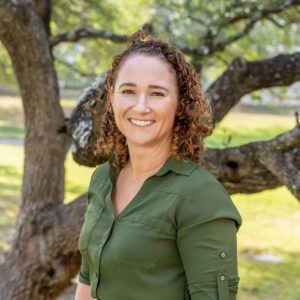 If you have questions or concerns about estate planning, Braun & Gresham can help. At Braun & Gresham, PLLC, we use a wide variety of tools to accomplish your estate planning goals, such as wills, living trusts, medical and financial powers of attorney and other disability- planning documents, limited liability companies, family limited partnerships, buy-sell agreements, charitable trusts, donor advised funds, conservation easements and many other strategies. We’ll help educate you about these various strategies, and together, identify which fit your circumstances best. Using the innovative and versatile estate planning solutions that Braun & Gresham is known for, we’ll create the most practical solutions and apply them in a comprehensive plan to achieve your vision for your family and assets.
If you have questions or concerns about estate planning, Braun & Gresham can help. At Braun & Gresham, PLLC, we use a wide variety of tools to accomplish your estate planning goals, such as wills, living trusts, medical and financial powers of attorney and other disability- planning documents, limited liability companies, family limited partnerships, buy-sell agreements, charitable trusts, donor advised funds, conservation easements and many other strategies. We’ll help educate you about these various strategies, and together, identify which fit your circumstances best. Using the innovative and versatile estate planning solutions that Braun & Gresham is known for, we’ll create the most practical solutions and apply them in a comprehensive plan to achieve your vision for your family and assets.
Please contact Braun & Gresham at (512) 894-5426 or email [email protected].
Don’t miss Erin Chesser’s upcoming webinar, ‘3 Reasons for an Estate Plan that have Nothing to Do with Death,’ on February 10th, 2022. Register now at: https://plateauwildlife.com/event-directory/
Field Notes: Pictures & Highlights of Properties in Wildlife Management
Ever wonder how Wildlife Management is benefiting landowners’ property and the wildlife that lives on it? Here are some photos and highlights, from Plateau’s field staff and game cameras, of successes and small victories our landowner customers are seeing on their property.
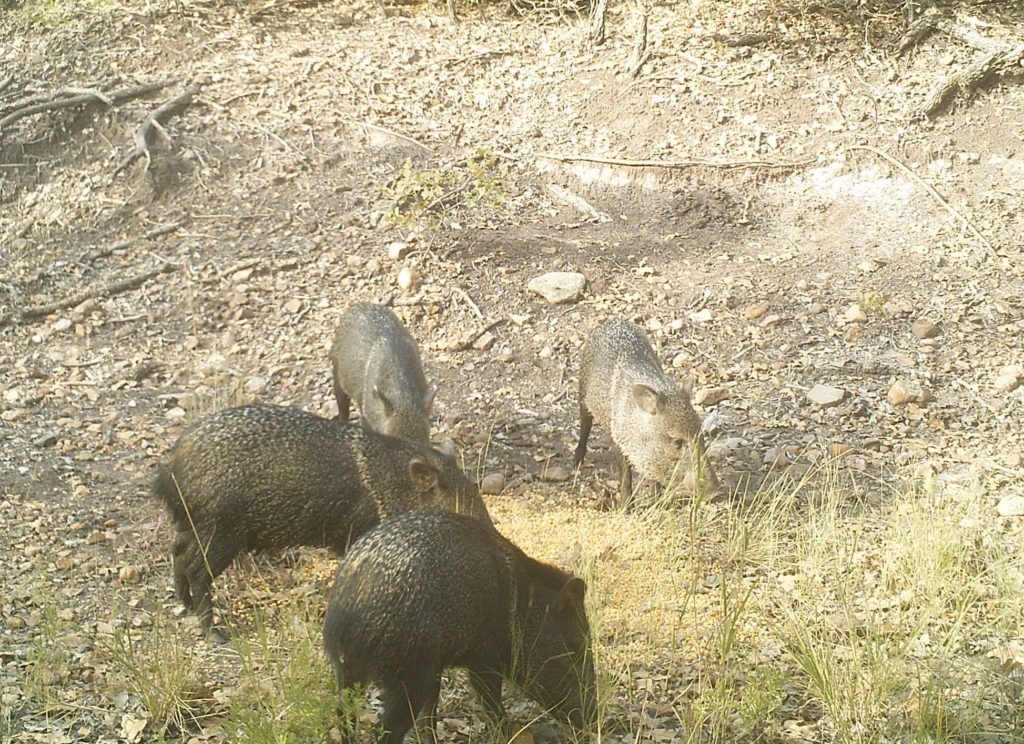 Javelina in Bastrop County
Javelina in Bastrop County
Check out these Collared Peccary, also known as Javelina (Pecari tajacu), caught on a game camera during a PLW deer survey in western Bastrop county.
Javelina are native pig-like critters with an enormous range between the southwestern U.S. and Argentina. Historically, they once roamed extensively throughout central and north Texas, but were pushed out of these areas and now found mostly in the western Trans-Pecos and South Texas brush country. Small remnant populations and modern range expansions are noted in the Edwards Plateau, and in Bastrop and eastern Travis counties.
Often confused with feral hogs, they are only distantly related, sharing a common ancestor many millions of years ago. Despite their appearance, they are not pigs, and have several noticeable differences. Javelina are generally smaller and more compact (averaging around 35-45 pounds), lacking tails, and having a distinct white “collar”, giving them their name. Like feral pigs, they travel in small herds or “squadrons”, and are omnivorous, feeding on cactus, mesquite beans, roots, tubers, insects, and small vertebrates.
Photo and caption courtesy of James A. Hall.
Game cameras offer landowners the opportunity to get familiar with the wildlife that frequent their property. Consider placing one on your own, or have Plateau conduct a Remote Game Camera Survey for you! For more information, give us a call at (512) 894-3479.
So many of you are out there doing great work. We appreciate you, and so do the native wildlife on your property and across Texas. Large or small, you are making a difference. Look for more great examples of wildlife and landowner successes and victories in upcoming Seasons Newsletters!
News for Texas Landowners
Armored, invasive, destructive: Hundreds of suckermouth catfish found in San Marcos river
Article by BY MITCHELL WILLETTS, Fort Worth Star Telegram

Hundreds of hard-to-kill catfish were recently caught in a Texas river — but what makes them so tough, and why do wildlife experts want them gone? The species name, “suckermouth armored catfish,” only partially answers that first question, and the fact that they’re invasive doesn’t fully address the second.
Originating from the waters of South America, the suckermouth is “an aquarium fish that was released into the wild [and] has grown out of control,” the Texas Parks and Wildlife Department said. The armored catfish is a long way from home swimming around Texas waterways, but it has thrived anyway, to the detriment of the state’s natural ecology.
Detecting Texas drought conditions with small fish
Adam Russell, Texas A&M University
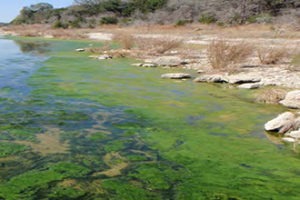
Shiners in the streams could serve as canaries in a coal mine for tracking water availability and planning for future droughts, according to a Texas A&M AgriLife Research scientist.
Joshuah Perkin, Ph.D., fish ecologist in the Department of Ecology and Conservation Biology in the College of Agriculture and Life Sciences at Texas A&M University, has been focusing on how small fish species react to disruptions to water flow in creeks, streams and rivers.
Perkin said these fishes’ sensitivity to change and their populations’ success or failure in streams are good indicators of how groundwater depletion or drought are impacting freshwater ecosystems. The rise and fall of these fish populations are also a good prognosticator for how these changes could impact humans.
In Search of the Jaguarundi
Article by Will McCarthy for Texas Monthly
Jim Schroeder rounded a bend in the Aransas National Wildlife Refuge this September, the side of his pickup brushing past high grasses emerging from the dense South Texas thickets. Schroeder’s sister, Linda, and her husband, Bob Carroll, who were visiting from Idaho, sat in the truck beside him. They had come to this stretch of the vast 115,000-acre refuge, near Austwell, to look for alligators, so the group drove slowly, eyes scanning the coastal landscape.
Then, as they came around the turn, they saw it: a striking black cat that appeared to have an elongated neck, a strange, narrow head, and a long tail. The creature stopped, looked at them, and paused for a moment.
Statewide estate survey underway among farmers, ranchers, rural landowners
Article by Texas Agrilife

Understanding how those on our farms and ranches are being passed on through estates and what more do our rural landowners need to know about the process is the goal of a new Texas A&M AgriLife Extension Service project funded by the Texas Corn Producers.
Tiffany Lashmet, J.D., AgriLife Extension agricultural law specialist, and Justin Benavidez, Ph.D., AgriLife Extension economist, both in Amarillo, are conducting a survey of farmers, ranchers, agribusiness owners and rural landowners about estate and succession planning.
“Estate and business succession planning is one of the most important things that any farmer, rancher or rural landowner can do,” Lashmet said. “Unfortunately, the statistics tell us many simply aren’t doing it.”
Prescribed burns benefit mission readiness at Fort Hood
Article by Fort Hood DPW Environmental
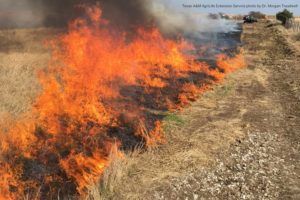
FORT HOOD, Texas – Armed with a drip torch, Caleb Thyer, senior firefighter and forestry technician with U.S. Fish and Wildlife Service, ignited a fire in training area 51 here.
Prescribed burns are an essential part of Fort Hood’s mission readiness and biodiversity. The common types of burns include broadcast burning in training and live-fire areas and pile burning of woody vegetation.
Fort Hood’s prairie lands have been encroached by juniper woodland caused by decades of fire suppression. Juniper is the same plant that causes cedar allergies.



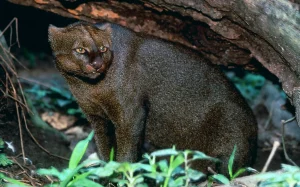



Sorry, the comment form is closed at this time.